Introduction to Supabase and Kloudbean
Supabase is an open-source backend-as-a-service platform that offers powerful features like real-time databases, authentication, and storage, making it an ideal solution for developers looking to build full-stack applications. With Kloudbean’s managed cloud infrastructure, deploying a personalized self-hosted Supabase instance has never been easier. This article provides a step-by-step guide on how to launch and configure your very own Supabase instance on Kloudbean, ensuring a smooth setup and full customization of your database and authentication systems.
You’ll learn how to set up and configure the necessary cloud resources on Kloudbean, ensuring optimal performance and security for your self-hosted Supabase. The guide will cover the entire process, from selecting the right cloud configuration to integrating Supabase services, and making your deployment fully personalized based on your needs. Whether you’re a developer looking for a scalable database solution or a business aiming to manage your data securely and efficiently, this article will help you harness the full potential of Supabase with Kloudbean's easy-to-use platform.
By the end of the article, you'll have a fully functional Supabase instance up and running, with the ability to scale and manage your services independently. Kloudbean ensures a reliable and secure environment, giving you the flexibility and control to customize your database setup while benefiting from managed cloud infrastructure.
By following this guide, you’ll have a personalized, self-hosted Supabase instance running on Kloudbean in no time, fully optimized for your needs.
Steps to install Supabase using Kloudbean.
Deploying Supabase with Kloudbean is a straightforward process that provides you with a fully managed infrastructure, allowing you to focus on building your application rather than worrying about setup and configuration. Follow these steps to get your personalized Supabase instance up and running on Kloudbean.
Step 1: Create new server with Application type Supabase
To begin, you need to create a new server instance dedicated to hosting Supabase. This process involves selecting the right configurations that suit your project’s needs. Follow these instructions:
1.1 Choosing the Cloud Provider
Kloudbean supports multiple cloud providers to ensure that your application is deployed on the most suitable platform. Choose the cloud provider based on factors like performance, cost, and regional availability. Kloudbean’s interface allows you to easily select the provider for your infrastructure.
1.2 Choosing Application
Select Supabase as your application type. Supabase is a popular open-source backend-as-a-service platform that combines a real-time database, authentication services, and storage solutions, which is essential for full-stack applications.
1.3 Choosing Datacenter with Nearest Location
For optimal performance, it is crucial to choose a datacenter that is geographically closest to your users. This reduces latency and ensures faster data transfer speeds. Kloudbean lets you select the best datacenter location based on your requirements.
1.4 Adding Application Name
Give your Supabase instance a name that reflects the project or use case. This will help you identify the server in the future.
1.5 Adding Server Name
Assign a name to your server. This helps with server management and organization, especially if you have multiple projects hosted on Kloudbean.
1.6 Selecting Server Size
Choose the appropriate server size based on your expected load and resource requirements. For smaller projects or testing, you might select a smaller instance size, but for larger applications, you may need a more powerful server to handle higher traffic or resource demands.

One it is done, your application server will be initiated.
It will take around 8 - 12 minutes before your server got configured along with supabase application setup.

Step 2: Access Your Default Application
Once the server is created, Kloudbean will provide you with a default application URL and admin credentials to access your Supabase instance.
2.1 Accessing the Application URL
In the Application Administration section, you will find the Application URL. This is the default URL to access your self-hosted Supabase instance. Kloudbean automatically manages this URL, so you can access your Supabase dashboard from anywhere.
2.2 Admin Username and Password
Along with the Application URL, Kloudbean will provide you with the admin username and admin password. These credentials are used to log in to your Supabase instance and manage your database, authentication, and storage services.
- Admin Username: The username provided by Kloudbean for accessing the Supabase dashboard.
- Admin Password: The secure password for your admin account, which should be kept confidential.
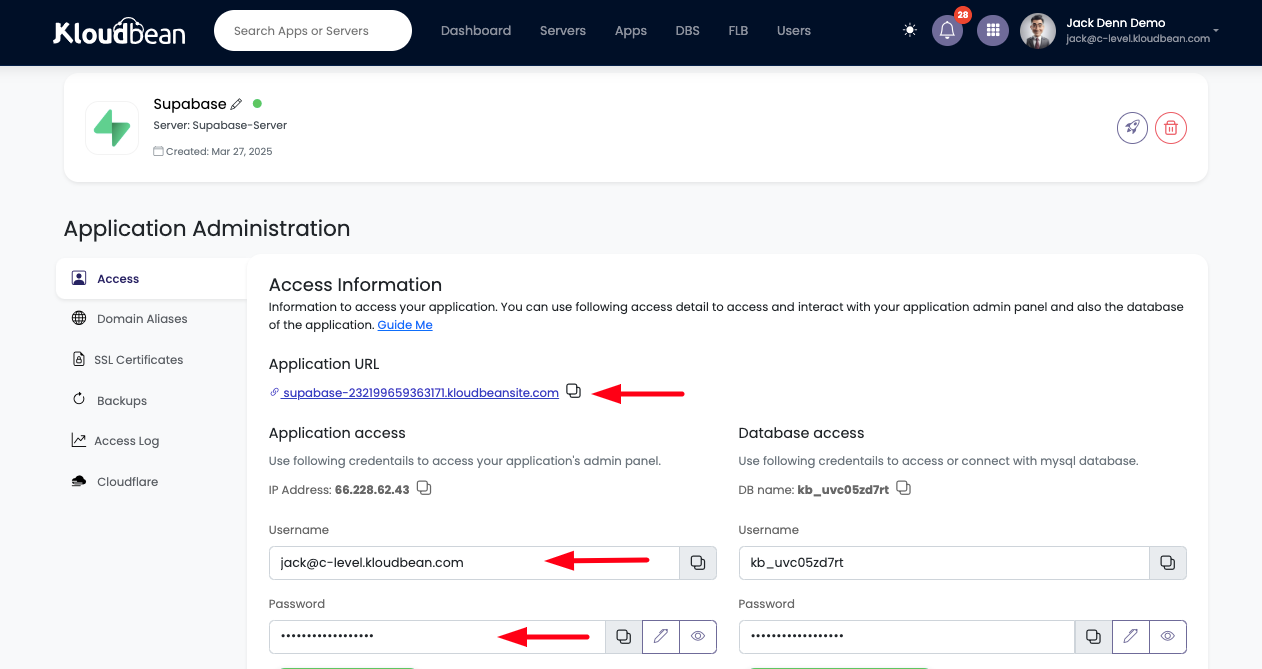
2.3 Logging in to Supabase
Click on the Application URL to open your Supabase instance in a web browser. On the login page, enter the admin username and admin password provided by Kloudbean. Once logged in, you will be directed to the Supabase Dashboard, where you can manage your projects, databases, and various settings.

Step 3: Configuring Your Supabase Instance
Once you’re logged in to the Supabase dashboard, you can start working on your project. The dashboard gives you access to a variety of features such as database management, authentication, storage, and more. From here, you can:
- Create a new Supabase project.
- Configure your database schemas and tables.
- Set up authentication providers and rules.
- Enable storage for handling file uploads.
You can also access additional settings like real-time subscriptions, API keys, and custom domains directly from the Supabase Dashboard.
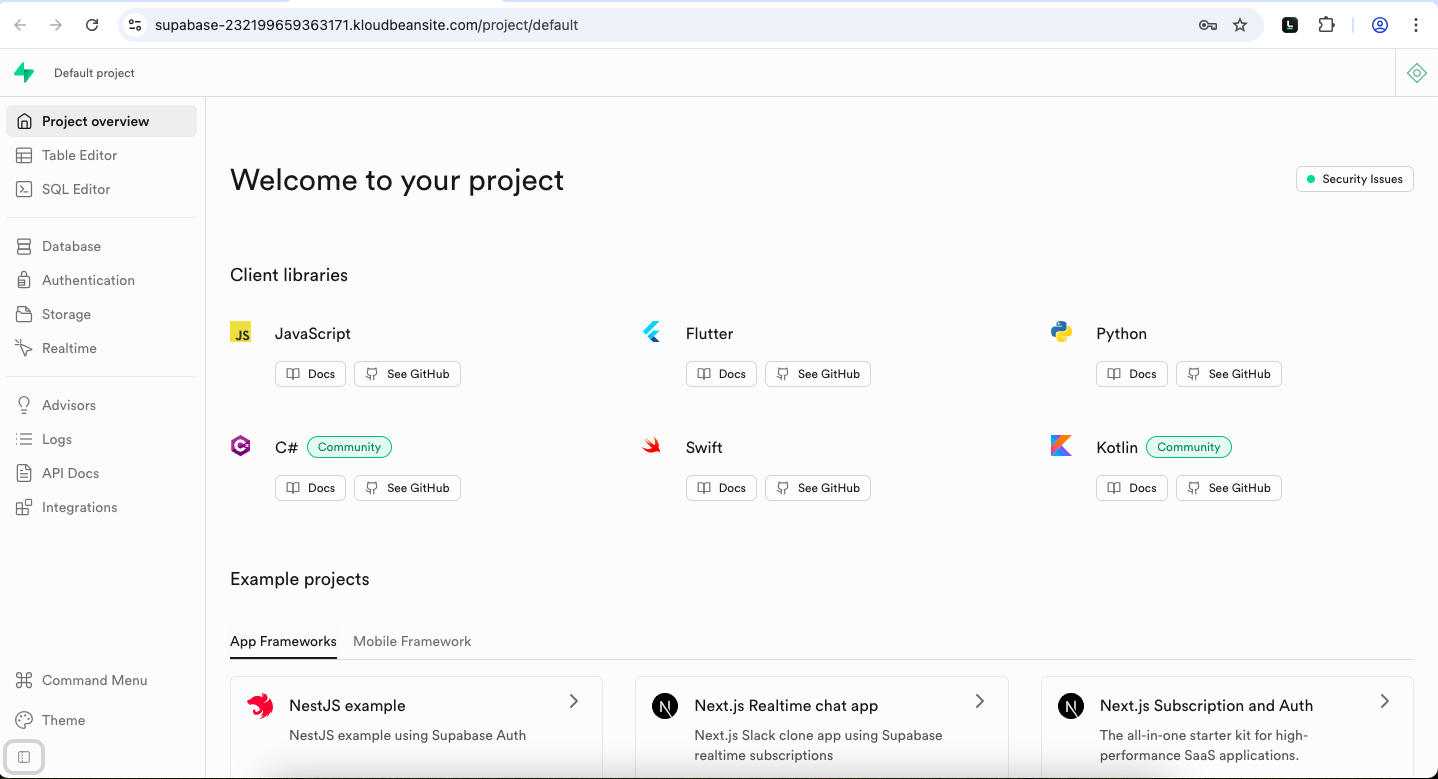
Getting Supabase Postgres Database access
By default, the Supabase stack runs the Supavisor connection pooler. Supavisor provides efficient management of database connections.
You can connect to the Postgres database using the following method. For session-based connections (equivalent to direct Postgres connections).
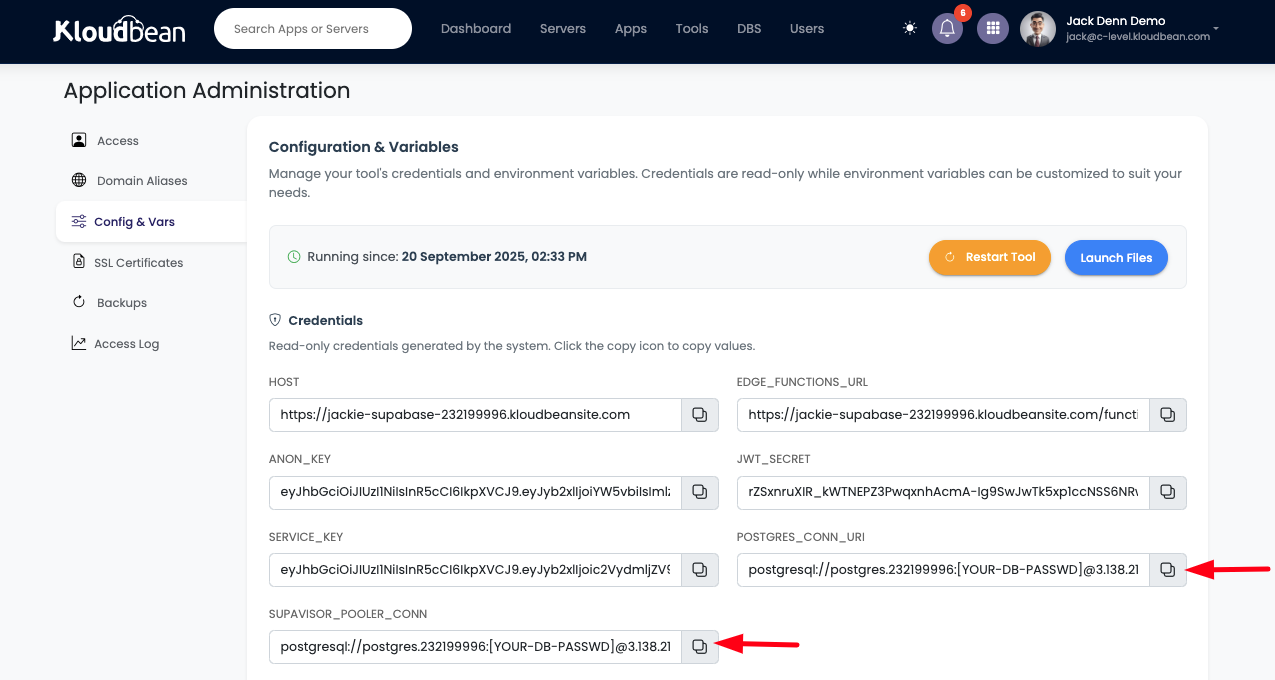
psql 'postgres://postgres.tenant-id:[YOUR-DB-PASSWORD]@[SERVER-IP]:5432/postgres'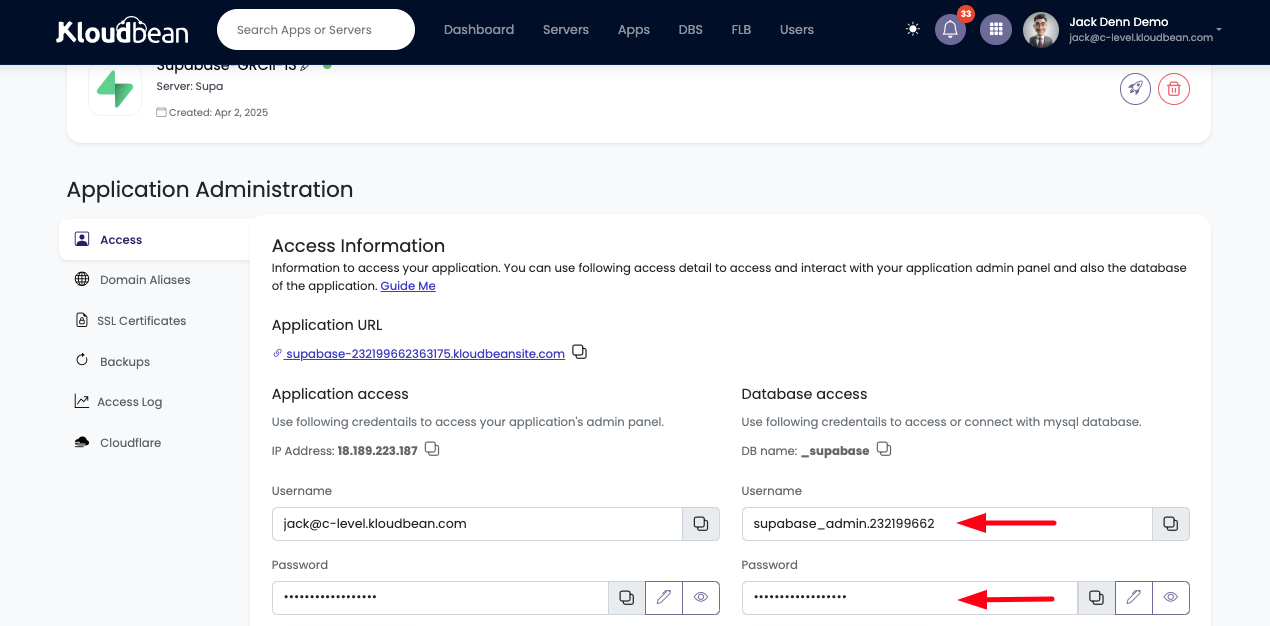
Getting Supabase Api access
Kloudbean provides two important API keys for accessing and interacting with your Supabase instance: the Service Role Key and the Anon Key. These keys are used for different purposes and provide various levels of access to your Supabase services.
Understanding the Supabase API Keys
1. Service Role Key
The Service Role Key is a powerful key that grants elevated privileges to access and manage your Supabase instance, including performing operations that require administrative permissions. This key is typically used for backend integrations and server-side access, such as database management, inserting, updating, and deleting records, and other tasks that require elevated access beyond user permissions.
This key should be handled with care, as it has the potential to modify your database and configuration. It’s important to keep this key secure and only use it in trusted environments, such as your server-side code.
2. Anon Key
The Anon Key is a public key that is used for client-side access, typically in situations where end-users need to access the Supabase database but without requiring full access to sensitive administrative actions. This key is usually used for client-side operations such as reading data from the database or interacting with APIs that do not require privileged access.
For example, when a user logs in or performs actions that don't involve modifying the database, the Anon Key will be used to authenticate the requests securely. This key is less powerful than the Service Role Key and is intended for client-side interactions.
Steps to Access Supabase API Keys on Kloudbean
Follow these steps to access your Supabase API keys for integration with other applications:
1. Go to Config & Vars
To access your Supabase keys, navigate to Config & Vars Tab.
Here in Credentials section, you will be able to find ANON KEY and SERVICE KEY.
2. Copy Anon Key
You will find ANON KEY in the list, simply click on copy button to copy this and add in your project configs.
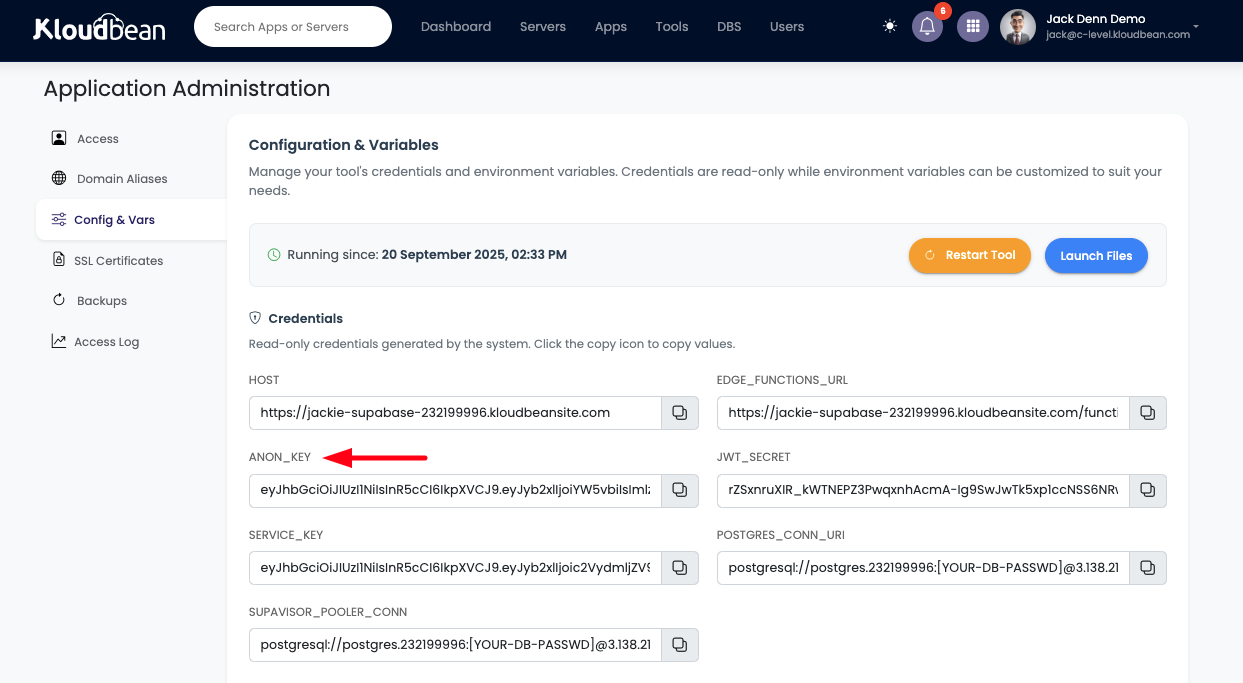
3. Copy Service Key
You will find SERVICE KEY in the list, simply click on copy button to copy this and add in your project configs.

3. Using the Application URL
When integrating your Supabase instance with external applications, you will also need the Application Default URL provided by Kloudbean. This URL, which is managed by Kloudbean, serves as the base URL for making API requests to your Supabase instance. You can use this same default URL for integrating the service, regardless of whether you are using the Service Role Key or Anon Key.
Supabase to Kloudbean Migration Guide
If you're currently using the official Supabase Cloud and would like to migrate to a Kloudbean-managed self-hosted Supabase instance, this guide will walk you through the steps required to migrate your core components, including:
- Edge Functions
- PostgreSQL Database
- Storage (Buckets & Files)
Migrating Edge Functions
To migrate your Edge Functions from Supabase Cloud to Kloudbean, follow these steps:
Step 1: Export Edge Functions from Supabase
- Log in to your Supabase Cloud account.
- Navigate to the Edge Functions section from the sidebar.
- For each function: Download function as ZIP.
Repeat this process for all your functions.

Step 2: Upload Functions to Kloudbean
- Extract the downloaded ZIP file(s) on your local machine. You should find a file named index.ts
- In your Kloudbean project dashboard, go to Config & Vars > Launch Files to open the File Manager.
- Inside the File Manager, locate the edge_functions folder.
- For each function: create a new folder with the name of your functions and upload index.ts file into it.
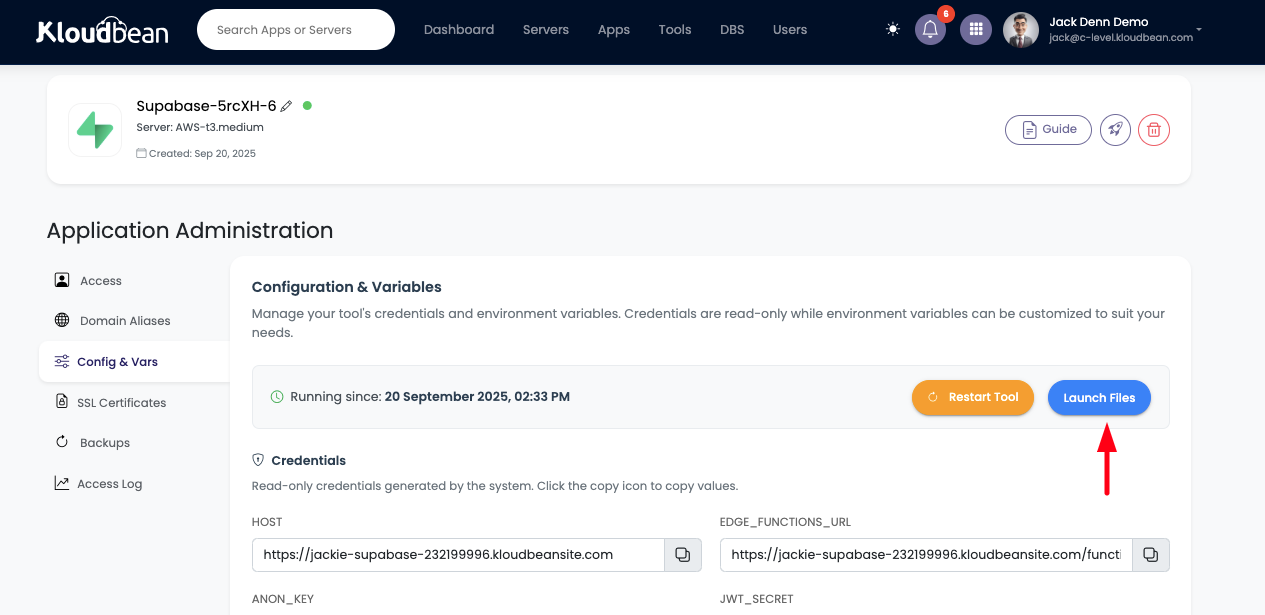
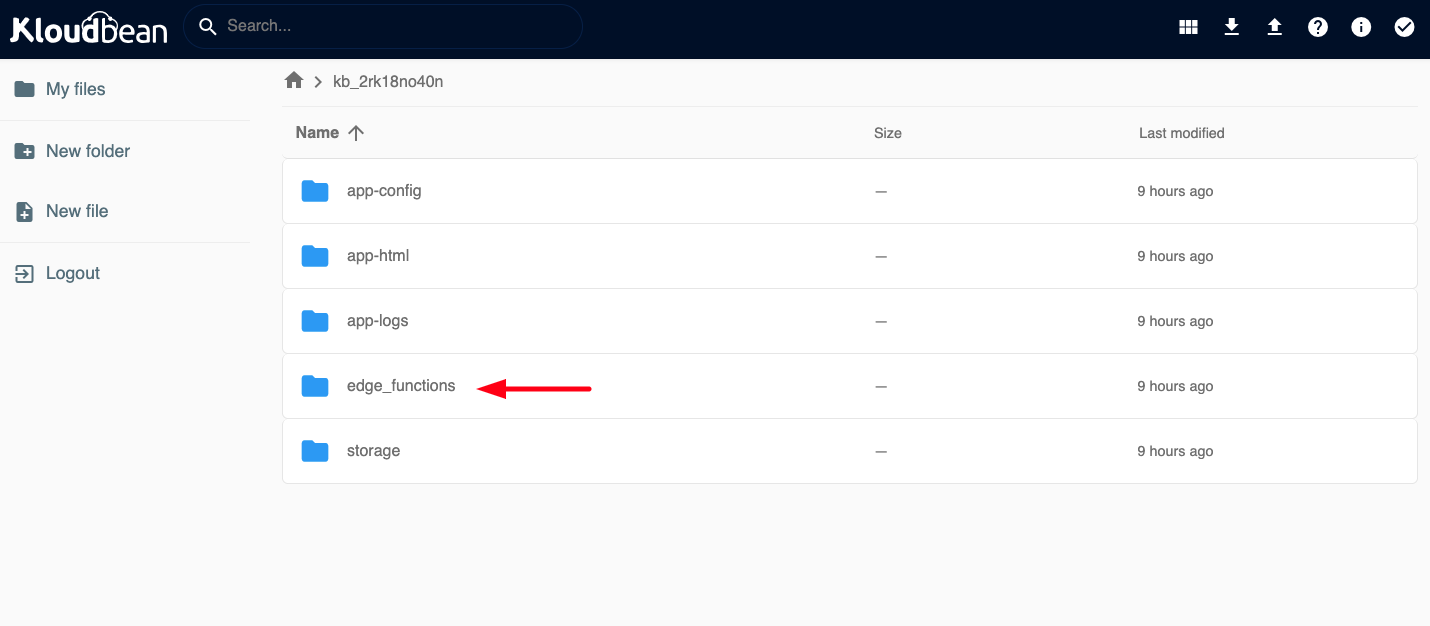
Step 3: Access Your Functions
Once uploaded, your edge functions will be automatically deployed and accessible via the following URL pattern:
https://[your-kloudbean-supabase-url]/functions/v1/[function-name]Database migrationMigrating the Database
Migrating your PostgreSQL database from Supabase Cloud to Kloudbean involves exporting your database and restoring it on the new instance.
Option 1: Manual Migration
- From your Supabase Cloud dashboard, connect to your PostgreSQL instance using a database tool like pgAdmin, TablePlus, or DBeaver.
- Export a dump of your database using the pg_dumps tool or your preferred GUI tool.
- Connect to your new Kloudbean-hosted Supabase PostgreSQL instance and restore the dump.
Option 2: Assisted Migration
If you're unable to migrate the database yourself, the Kloudbean Support Team can help. Reach out via the support panel or email. You may be asked to provide temporary read access to your Supabase Cloud database to facilitate a smooth and secure migration.
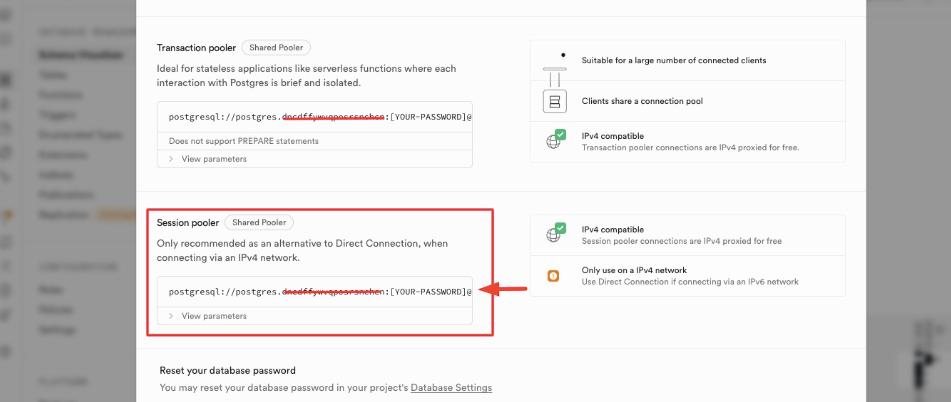
Migrating Storage Buckets & Files
To migrate your object storage from Supabase Cloud to Kloudbean:
Option 1: UI-Based Migration
- In Supabase Cloud, go to the Storage section and open your bucket(s).
- Manually download the objects/files you need.
- In Kloudbean, create a bucket with the same name as in your Supabase Cloud instance.
- Use the Kloudbean dashboard to upload the objects to the new bucket.
Option 2: Using File Manager
- Go to Config & Vars > Launch Files in the Kloudbean dashboard.
- Navigate to the appropriate storage path and upload your files directly into the new bucket.
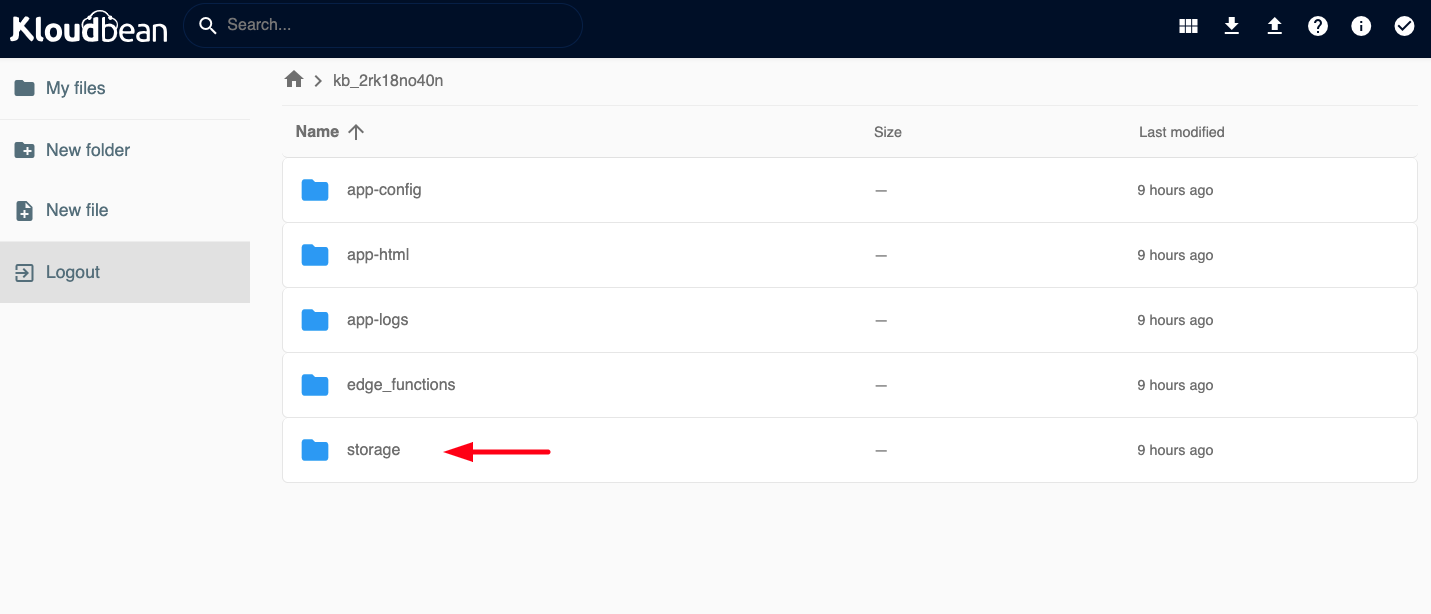
Public objects will be accessible using the following URL format:
https://[your-kloudbean-supabase-url]/storage/v1/object/public/[bucket-name]/[object-name]
Kloudbean Security Features for Your Supabase Instance
Kloudbean ensures that your self-hosted Supabase instance is secure by default. A variety of security measures are automatically applied to protect your data and credentials. Some key security features include:
4.1 Secure Management of Secrets
All critical secrets such as Secret Key, JWT Secret, Logflare Key, Vault Key, Service Role Key, and Anon Key are automatically generated and securely stored by Kloudbean. These keys are unique to your instance and are essential for the smooth operation of Supabase's authentication and API services. Kloudbean ensures that these secrets are encrypted and stored in a secure environment, preventing unauthorized access.
- Secret Key: Used for encrypting data and securing communication.
- JWT Secret: Ensures the integrity of JSON Web Tokens (JWTs) for authentication purposes.
- Logflare Key: Handles the logging mechanism, ensuring that logs are securely generated and stored.
- Vault Key: Provides a secure method to store and retrieve sensitive information like API keys and database credentials.
- Service Role Key: Grants privileged access to Supabase services for internal processes.
- Anon Key: A public key used for anonymous access to certain services without the need for authentication.
4.2 Built-in Encryption and Secure Access
Kloudbean applies encryption at both the application and database levels to protect your data at rest and in transit. This ensures that sensitive information, including user data, API keys, and authentication credentials, is kept secure.
4.3 Automatic Security Updates
Kloudbean continuously monitors your Supabase instance for vulnerabilities and automatically applies any necessary security patches or updates. This reduces the likelihood of security breaches and ensures your system remains up-to-date with the latest protection measures.
Conclusion
By following these steps, you can easily launch and manage a personalized, self-hosted Supabase instance using Kloudbean. From configuring your server to accessing the Supabase dashboard and ensuring top-notch security for your application, Kloudbean provides a seamless and secure environment for your Supabase deployment. With automatic management of critical credentials, encryption, and constant security updates, you can focus on developing your application while Kloudbean takes care of the infrastructure and security. Whether you’re building a small project or a large-scale app, Kloudbean’s infrastructure offers the reliability and performance you need.